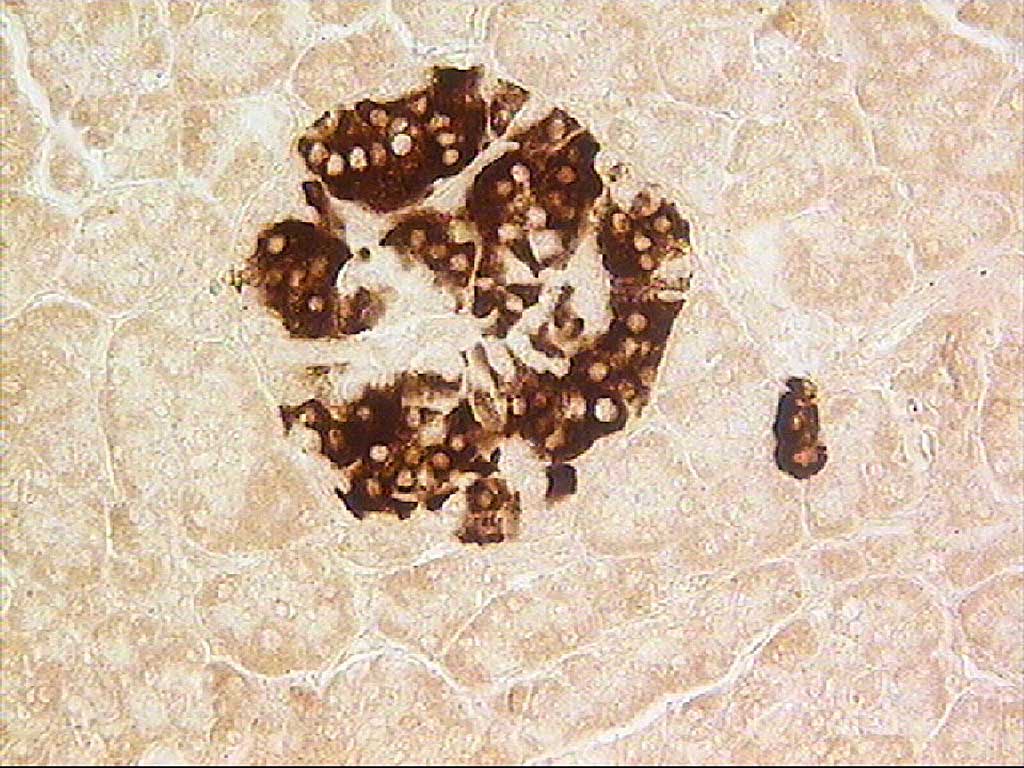Researchers Identify Genes Linked to the Development of Monogenic Diabetes
By LabMedica International staff writers
Posted on 02 Mar 2020
By studying a well controlled group of young Lithuanian diabetes patients, researchers were able to identify genes linked to the development of the rare monogenic form of diabetes.Posted on 02 Mar 2020
Monogenic diabetes, which results from a mutation in one of the genes involved in the regulation of blood sugar levels, represents approximately one to 4% of all cases of the disease. Monogenic diabetes is frequently confused with type I or type II diabetes, and more than 90% of monogenic cases are misdiagnosed.

Image: Photomicrograph of a pancreatic islet, showing insulin-producing beta cells (Photo courtesy of Wikimedia Commons)
To correct this situation, investigators at the Université de Genève (Switzerland) and the Lithuanian University of Health Sciences (Vilnius) took advantage of the fact that Lithuania has a register of all diabetic children, which also includes most of the young adults. For the current study, the investigators assessed 1209 pediatric and young adult diabetic patients for diabetes-related autoimmune antibodies. They then screened all antibody-negative patients using targeted high-throughput sequencing of more than 300 potential candidate genes.
Results revealed that in the group of 153 patients lacking autoimmune antibodies, 40.7% had monogenic diabetes, with the highest percentage (100%) in infants (diagnosis at ages 0–12 months), followed by those diagnosed at ages from one to 18 years (40.3%) and at 18 to 25 years (22.2%).
The overall prevalence of monogenic diabetes in diabetic youth in Lithuania was 3.5% (1.9% for glucokinase diabetes, 0.7% for hepatocyte nuclear factor 1 homeobox A, 0.2% for hepatocyte nuclear factor 4 alpha and ATP binding cassette subfamily C member 8, 0.3% for potassium inwardly rectifying channel subfamily J member 11, and 0.1% for insulin). Likely pathogenic variants were also detected in 11 additional genes.
"Hyperglycemia should therefore be considered as a symptom of various diseases, rather than a disease in itself, and different forms of diabetes should be better screened," said senior author Dr. Valérie Schwitzgebel, professor of pediatrics, gynaecology, and obstetrics at Université de Genève. "The earlier the actual cause is identified, the sooner appropriate treatments can be initiated, minimizing the risk for long term complications."
The monogenic diabetes paper was published in the February 21, 2020, online edition of the journal Diabetes.
Related Links:
Université de Genève
Lithuanian University of Health Sciences













